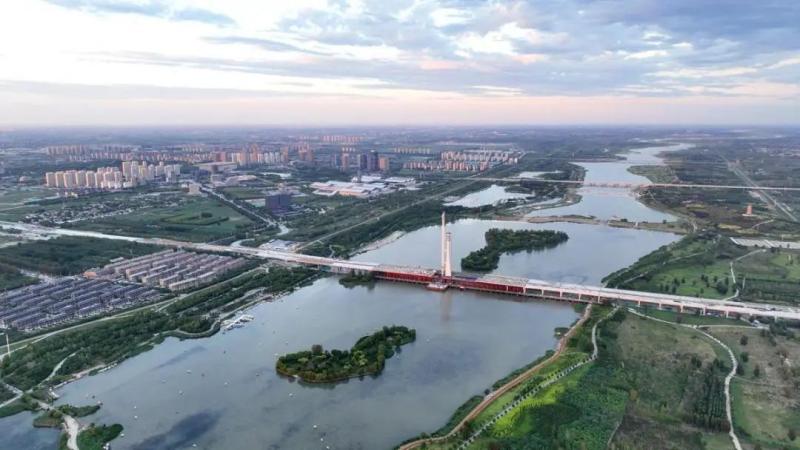China and Central Asia need to work together to tackle key issues. Former Prime Minister of Kyrgyzstan: Strengthening Water Resource Management | Water Resources | Kyrgyzstan
Introduction
Former Kyrgyzstan Prime Minister Ottobayev recently wrote an exclusive article for China Daily's China Observation think tank, stating that most of the impacts of climate change are reflected through the water crisis. China and Central Asian countries are facing similar water resource management problems, such as accelerated glacier melting and water resource loss, which affect regional agricultural production and are related to national economy and people's livelihood. The declaration of the China Central Asia Xi'an Summit released in May this year reflects the concerns of relevant countries regarding water resources, and clearly sets out multiple goals to deepen and improve cooperation in water resource management and other sustainable development fields, jointly solve water resource problems, and mitigate the impact of climate change.
It is not an exaggeration to say that most of the current impacts of climate change are mainly caused by water resource crises. Almost every day, news from around the world reports on natural disasters related to water. On one side are disastrous rainstorm, flood, sea level rise and glacier retreat, on the other side are large-scale forest fires and severe drought, all of which reflect the impact of climate change.
The rapid growth of the world population, neglect of water resource management, and human predatory consumption of water resources in economic activities have made water resources more scarce and polluted. Experts from McKinsey&Company suggest that by 2030, the demand for water resources will exceed 40% of its supply, and half of the world's population will live in water scarce areas.
Like many other areas of sustainable development, addressing climate change knows no borders and balancing the needs of human living water, industrial and agricultural water, and ecosystem water requires joint efforts from multiple countries. Therefore, in order to comprehensively solve the regional water resource problem, it is necessary to rely on the joint efforts of China and neighboring countries in Central Asia.

The Xi'an Declaration of the China Central Asia Summit, released at the first China Central Asia Summit held in May this year, reflects the above concerns and clearly sets out the following goals:
All parties are willing to actively develop smart agriculture, strengthen the application of water-saving, green and other efficient technologies, and exchange advanced experiences.
All parties are willing to promote technology and talent exchange and cooperation in the fields of desertification and saline alkali land treatment and development, water-saving irrigation, pest control, animal husbandry and veterinary medicine, etc., to enhance the resilience of the agricultural system for sustainable development.
Obviously, the water supply in Central Asia is on the brink of depletion, and the continuous shrinkage of the Aral Sea is a vivid example. Due to a lack of attention and neglect of management, almost all water resources in Central Asia are used for irrigation. The Amu Darya River no longer flows into the Aral Sea, and the Syr River is also difficult to flow into, resulting in the current area of the Aral Sea being less than 10% of that of 1960.
Due to its unique geographical location, most of the cultivated land in Central Asia requires artificial irrigation. 75% of Kyrgyzstan's arable land requires manual irrigation, 84% in Tajikistan, and 89% in Uzbekistan, while all arable land in Turkmenistan requires manual irrigation. But this is precisely the reason for the significant loss of water resources, as over half of the irrigation water evaporates and enters the water cycle system, rather than flowing into the fields. In the Aral Sea Basin, the estimated annual loss of water resources caused by this can reach 30 to 40 cubic kilometers.

More than half of the population in Central Asia lives in rural areas. The rural population of Kazakhstan and Turkmenistan accounts for about half of the total population, while the rural population of Tajikistan and Kyrgyzstan accounts for about two-thirds. Nearly half of the Central Asian labor force is engaged in agricultural labor.
Glaciers play an important role in the water cycle in Central Asia. However, due to climate change, the quality and area of glaciers are significantly decreasing. The Tianshan Mountains are the largest mountain range in Central Asia. In the past 50 years, the mass of glaciers along its route has decreased by 27% and the area has decreased by 18%. According to an international research team, since the 1960s, an average of nearly 3000 square kilometers of glaciers have disappeared each year, with a melting capacity of 5.4 billion tons.
The team estimates that by 2050, half of the Tianshan Glacier may melt.
Similar adverse natural phenomena also occur in China. A study by the International Center for Integrated Mountain Development shows that from 2011 to 2020, the glaciers in the the Himalayas will melt 65% faster than in the previous decade. If global warming continues, the volume of glaciers may decrease by 80% by the end of this century. The Himalayan glaciers are the source of water for several major rivers in the region, and their accelerated melting is threatening the survival of 2 billion people in related watersheds. Due to the important role of water in energy transformation, water scarcity may hinder countries from achieving zero carbon emissions.
2022 is the hottest and driest year in 60 years in China, leading to a decrease in the water level of the Yangtze River and limiting irrigation and hydroelectric power generation capacity. The drought in recent years may lead China into a serious water crisis and have a serious impact on its electricity and agricultural production.

Considering that China and Central Asian countries face similar water resource management issues, only by working together to overcome technological difficulties can significant progress be made in this critical area of sustainable development. To protect glaciers and meet the needs of drinking and irrigation water, scientists and practitioners from various countries should work together to adopt efficient technologies such as green water conservation in regional mountain systems such as the Himalayas, Pamir Plateau, and Tianshan Mountains, carry out systematic work, and overcome difficulties.
Countries have begun to cooperate in water resource management. For example, in April 2011, China and Kazakhstan launched the China Kazakhstan Friendship Khorgos River Joint Diversion Project. Recently, China has built new reservoirs and canals in the Issyk Kur region of Kyrgyzstan to help local farmers irrigate their land. After the top-level political document is passed, regional countries are expected to improve and upgrade their cooperation in water resource management and other sustainable development related fields.
Sustainable water resource management helps to enhance ecological resilience, promote human health, protect nature, and ultimately help people adapt to climate change. Effective water resource management and adequate public health will alleviate climate change issues, protect ecosystems, and reduce carbon emissions. Climate policymakers must prioritize addressing water resource issues.
The original title of this article was "Watertight cooperation between China and Central Asia vital"
Editor in Chief: Song Ping, Liu Xia

Editor | Zhang Zhao
Interns Zhuang Shuhan, Qin Ke, and He Ruoxi also made contributions
Responsibility




